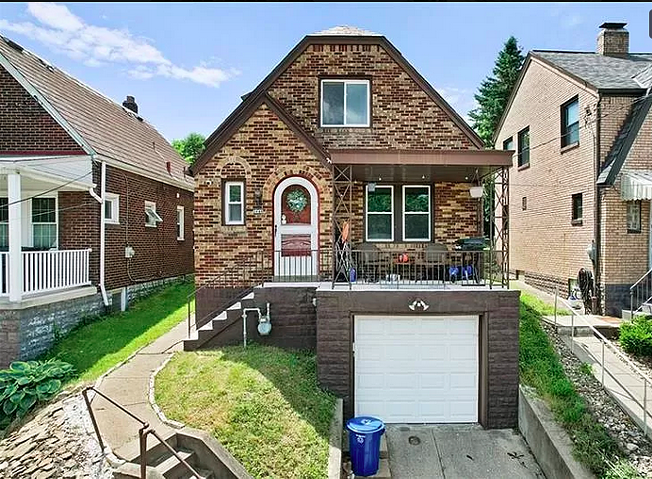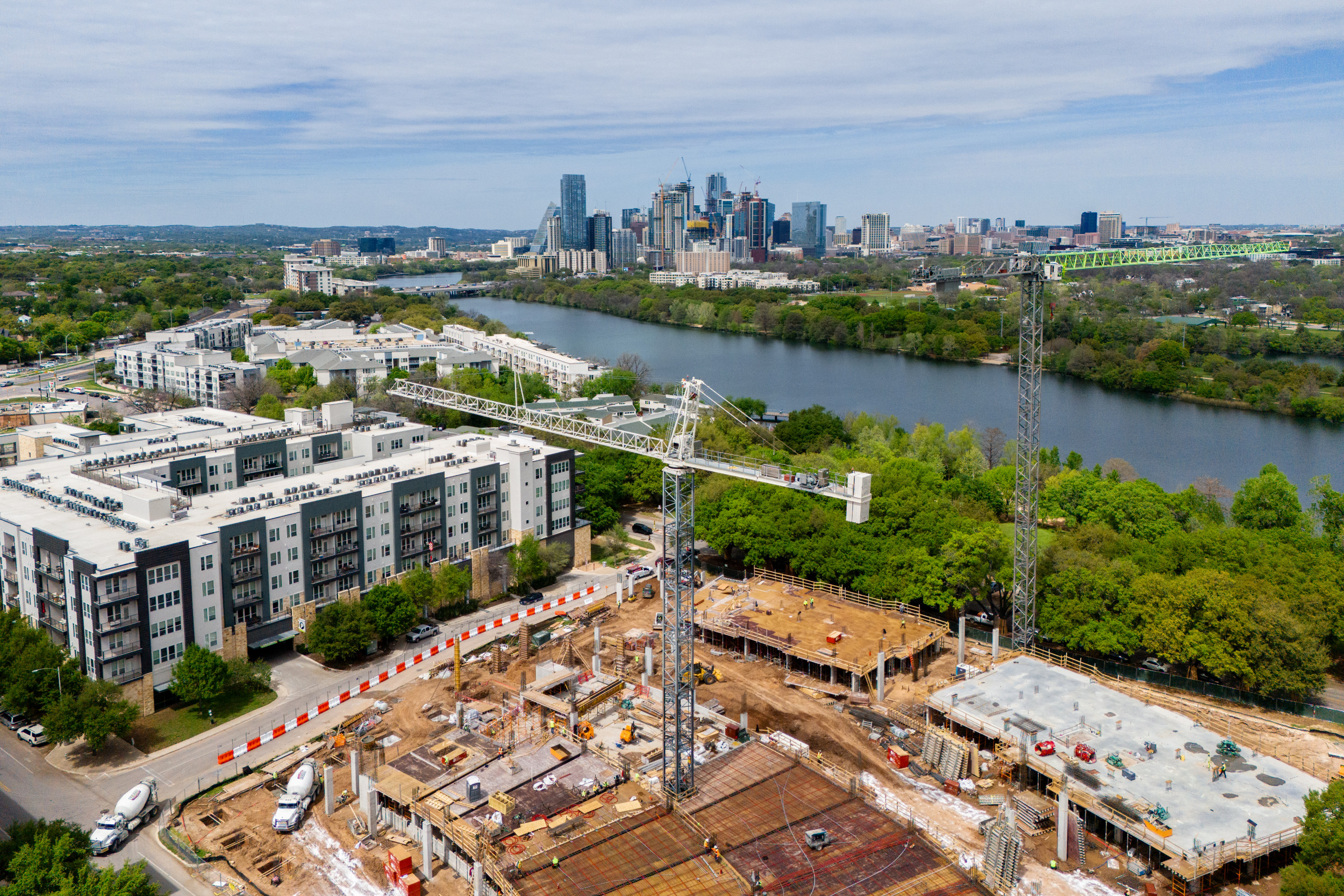San Diego, CA
VIDEO: County Celebrates New Affordable Housing Underway in San Ysidro

The County celebrated the beginning of construction on a new affordable housing complex in San Ysidro.
The Iris at San Ysidro will feature 100 units ranging from one to three bedrooms, including 15 fully furnished units reserved for people experiencing or at risk of experiencing homelessness.
The development is a collaborative partnership with National CORE, the County of San Diego, the San Diego Housing Commission, and City of San Diego.
“It is a good day when we can come together to take a step forward in ensuring San Diegans have a safe, supportive and affordable place to live,” said David Estrella, County Housing and Community Development Services Director. “The Iris at San Ysidro will be a welcoming new community for families and children close to transit, jobs and educational opportunities.”
The County provided $10.5 million from the County’s Innovative Housing Trust Fund and No Place Like Home funds for the development. County Behavioral Health Services also committed to providing care at The Iris for the next 20 years.
The Iris at San Ysidro is expected to be completed in 2025.
The County has been a partner in breaking ground on eight other affordable housing projects so far this year.
Since 2017, the County has invested more than $235 million in affordable housing, including using County excess property and its Innovative Housing Trust Fund.
Efforts since 2017 have resulted in 1,660 new units opened with an additional 2,926 units on the way.
When all the developments in the pipeline are complete, the total number of affordable units supported by the County will reach nearly 7,600. This is expected to provide homes to more than 16,700 people.
The development plans are in alignment with the County’s Housing Blueprint, which is currently being created. Once final, it will be the County’s guide to its ongoing response to the regional housing crisis.

San Diego, CA
Takeaways from the campaigning to win over rural voters in swing-state North Carolina

OXFORD, N.C. (AP) — President Joe Biden and Donald Trump have their sights on a handful of battleground states in the White House race, and North Carolina is one of them.
Rural voters in particular will play an important role for both campaigns, but the candidates will have to overcome voter indifference, fatigue and even disgust.
Both Democrats and Republicans hope face-to-face contact will help them make their case. In places like Granville County, a swing county tucked between the Raleigh-Durham area and the Virginia state line, that has already begun.
Here are some key takeaways from an examination of the campaign less than five months before the November general election.
Spending war for North Carolina’s airwaves
When it comes to advertising spending in North Carolina, Democrats are outpacing Republicans by a nearly 4-to-1 margin, according to AdImpact data. As of June 7, Democratic groups had spent more than $4 million compared with about $1 million from Republicans in the state.
That gap widens even further when looking ahead to the fall. For reserved ad slots between June 8 and Election Day, Democrats have spent more than $5.6 million so far, compared with $25,000 reserved by one Republican political action committee. Those reservations are subject to change as races come into focus.
The Raleigh-Durham area makes up a significant portion of advertising spending in North Carolina for both parties: almost $2 million for Democrats and more than $138,000 for Republicans. The area skews heavily Democratic, but it also borders counties such as Granville and Franklin that voted for Trump in 2020.
Tuning out the election
As a rematch of 2020 takes shapes, many people in the United States are not paying much attention to the election.
About 4 in 10 Americans in a Pew Research Center poll conducted in April said they are not following news about candidates in presidential contest too closely or at all. Younger adults are less likely than older ones to be following election news.
Many people already find the election exhausting, even if they are not tuned in. About 6 in 10 U.S. adults in the poll say they are worn out by so much coverage of the campaign and candidates. Those not following closely are especially likely to say they are exhausted.
Trump’s record with North Carolina’s rural counties
In a state with the second highest rural population in the country, winning over those voters is essential. Democrats may not win outright in rural parts of North Carolina, but if they can keep the margins close, they have a better chance to take advantage of their strength in the state’s urban areas.
Previous election results show that appealing to North Carolina’s rural voters may be easier for Republican Trump than for Democrat Biden.
In 2020, 64 rural counties backed Trump while only 14 went for Biden. Compared with his 2016 campaign, Trump’s winning margin grew in most rural counties four years ago.
Possible openings for Democrats
A handful of rural counties could be more competitive. Granville County, for example, had one of the tighter margins of victory for Trump — 53% in 2020 — among rural counties. That was a jump of 3 percentage points from 2016, when he narrowly won against Democrat Hillary Clinton.
Before Trump, Granville County was considered a blue rural county. Democrat Barack Obama won it in 2008 and 2012. It’s one of six counties in North Carolina that made the pivot from Obama to Trump.
San Diego, CA
Police searching for suspect after Bay Terraces Jack in the Box robbed at gunpoint

SAN DIEGO (FOX 5/KUSI) — San Diego Police are searching for a suspect after a Jack in the Box fast food restaurant was robbed at gunpoint Saturday morning.
The San Diego Police Department (SDPD) reports a male suspect pointed a handgun at a cashier and took an undisclosed amount of money from the register at a Jack in the Box on Alta View Drive in the Bay Terraces neighborhood at 9:51 a.m. on Saturday.
There is currently no suspect in custody, according to SDPD. They are describing the suspect as a white man in his 30s, who is 5’11”, with a full beard and mustache. Police say he was wearing a green beanie/ski mask, khaki jacket, and brown pants.
Police confirmed no employees or customers were injured during the incident.
SDPD Robbery Unit Detectives are investigating.
Anyone with information is asked to call the SDPD non-emergency line or Crime Stoppers at 888-580-8477.
San Diego, CA
Honduras plans to build a 20,000-capacity ‘megaprison’ for gang members as part of a crackdown

TEGUCIGALPA, Honduras (AP) — The president of Honduras has announced the creation of a new 20,000-capacity “megaprison,” part of the government’s larger crackdown on gang violence and efforts to overhaul its long-troubled prison system.
President Xiomara Castro unveiled a series of emergency measures in a nationally televised address early Saturday, including plans to strengthen the military’s role in fighting organized crime, prosecute drug traffickers as terrorists and build new facilities to ease overcrowding as narcoviolence and other crimes mount in the nation of 10 million.
Left-wing Castro’s “megaprison” ambitions mirror those of President Nayib Bukele in neighboring El Salvador, who has built the largest prison in Latin America — a 40,000-capacity facility to house a surging number of detainees swept up in the president’s campaign of mass arrests.
Honduran security forces must “urgently carry out interventions” in all parts of the country now witnessing “the highest rates of gang violence, drug trafficking, money laundering” and other crimes, Castro said in her midnight address.
Authorities plan to immediately construct and send dangerous gangsters to a 20,000-capacity prison near the rural province of Olancho, in the country’s east, said Maj. Gen. Roosevelt Hernández, the army chief of staff.
Escalated police raids have driven up the Honduran prison population to 19,500 inmates, crammed into a system designed for 13,000, the Honduran national committee against torture, or CONAPREV, reported last year.
The government has rushed to build new detention facilities. Last year, Castro announced plans to construct the only island prison colony in the Western Hemisphere — an isolated 2,000-capacity prison on the Islas del Cisne archipelago about 155 miles (250 kilometers) off the country’s coast.
The Honduran defense council also demanded that Congress change the penal code to allow authorities to detain suspected gang leaders without filing charges and carry out mass trials, as they do for alleged terrorists.
The raft of measures marked the latest example of Castro’s hard-line stance on security that intensified amid a surge of narcoviolence in 2022, when she imposed a state of emergency to combat the bloodshed and suspended part of the constitution — a page straight from the playbook of Bukele in El Salvador.
Like Bukele’s anti-gang crackdown that has restricted civil liberties in El Salvador, Castro’s tactics have drawn criticism from human rights groups that accuse her government of taking its tough-on-crime tactics too far.
But Bukele’s success in eradicating gangs that once terrorized large swaths of El Salvador has won him admiration across the region, including in Honduras, where a weary public wants to see results.
Last week, Honduran Security Minister Gustavo Sánchez announced that the government recorded 20% fewer homicides in the first five months of 2024 compared to the same period last year.
Yet critics remain skeptical that the Bukele model can deliver results in Honduras, where gangs remain powerful and corruption entrenched, despite the recent drop in homicides.
-

 News1 week ago
News1 week agoIsrael used a U.S.-made bomb in a deadly U.N. school strike in Gaza
-

 World1 week ago
World1 week agoFrance to provide Ukraine with its Mirage combat aircraft
-

 World1 week ago
World1 week agoWorld leaders, veterans mark D-Day’s 80th anniversary in France
-

 World1 week ago
World1 week agoRussia-Ukraine war: List of key events, day 833
-

 Movie Reviews1 week ago
Movie Reviews1 week agoInsane Like Me? – Review | Vampire Horror Movie | Heaven of Horror
-

 News1 week ago
News1 week agoNonprofit CFO Accused of 'Simply Astonishing' Fraud
-

 Politics1 week ago
Politics1 week agoGeorge Clooney called White House to complain about Biden’s criticism of ICC and defend wife’s work: report
-

 Politics1 week ago
Politics1 week agoNewson, Dem leaders try to negotiate Prop 47 reform off California ballots, as GOP wants to let voters decide




















